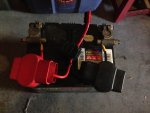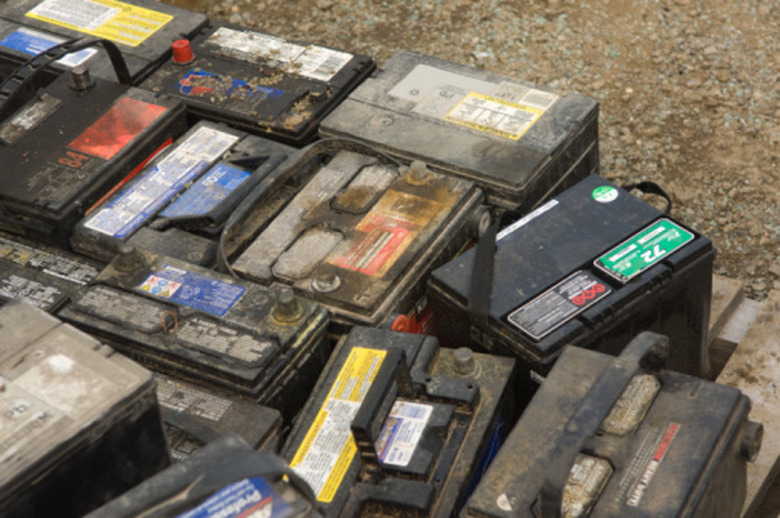Martinjmpr
Wiffleball Batter
As I posted here:

 www.expeditionportal.com
www.expeditionportal.com
I have a new truck. The Suburban is currently being used by our daughter-in-law until they can replace her old Traverse that died a couple of weeks ago.
In the meantime, camping season isn't over for us. We have 3 camping trips planned. 2 of them we will have shore power so they aren't an issue but the next one coming up we will be boondocking. I'd like to bring the TruckFridge (though it's not 100% necessary now that we have a 3 way fridge in the trailer) but that raises a problem, how to get power to the 12v fridge:
First of all, contrary to my previous experience where Domestic branded vehicles have 12v accessory power on all the time, on my new-to-me F-150, the accessory power shuts off after you open the door. I understand this can be changed using the ForScan tool but as of right now, once I shut the ignition off I have no 12v power source.
Much as I'd like to just do a 2nd battery setup like I had on the 'Burb, I don't think that's feasible on the F-150. This new truck has so many sensors, computers, smart alternators, etc, that I'm afraid introducing a variable like that would wreak havoc with my complicated electrical system.
I'm sure it can be DONE - with enough time, effort and MONEY anything is possible. But as I thought about it last night, I wondered if maybe I was overthinking this.
A second battery is not the objective - the OBJECTIVE is a way to reliably power the fridge.
So I got to thinking, what is the most basic, stone-axe simple way of getting power to the fridge without having to mess with the wiring on the new truck?
And then I came up with an idea that I thought I'd bounce off the folks here, since you're all pretty knowledgeable with these things.
My idea is this: I'd get a decent 12v deep cycle Marine/RV battery, the kind with the wing-nut terminals on it. Maybe a Group 27 or even a Group 31. I'd try to get at least a 100ah battery. Then I'd get a simple plastic box for the battery, with a strap handle. Put a fused 12v power outlet onto the battery using ring terminals (probably fused at 15a - is that too high? Should I do 10a or even 7.5? I doubt the fridge ever draws more than 5a.) Make sure the battery is fully charged, plug in and - VOILA! Done!
Sure, there's no way in this setup to CHARGE the battery. But for a 3 day camping trip, I'm thinking a 100ah+ battery should work fine. When I get home, I'll put it on the home charger and charge it back up.
I can also put an SAE connector on the ring terminals and connect it to my solar panel if needed. On a nice sunny day I can get about 5.5a out of the solar charger - which should be enough to offset the power draw from the fridge.
EVENTUALLY I'll build a true "power box" that connects to the truck, most likely with a DC-DC charger.
But in the interim, is there any reason why this setup WOULDN'T work, at least in the short term? Best thing is I could put it together from easily available parts in my garage in a matter of an hour or so.
All input is welcome!
PS Since the battery box will likely sit in the cab of the truck I'm leaning towards an AGM vs a FLA, just so it will be sealed. More expensive, I know, but worth it I think.

Outfitting the new-to-me 2018 F-150....EcoBoost specific thoughts?
I don't want to clutter the forum with a bunch of threads so I'll just keep appending this one. For those that didn't see my earlier thread, this is on my new-to-me 2018 F-150 that I just bought. Primarily will be used to pull our 20' travel trailer through the Rocky Mountains and wherever...
 www.expeditionportal.com
www.expeditionportal.com
I have a new truck. The Suburban is currently being used by our daughter-in-law until they can replace her old Traverse that died a couple of weeks ago.
In the meantime, camping season isn't over for us. We have 3 camping trips planned. 2 of them we will have shore power so they aren't an issue but the next one coming up we will be boondocking. I'd like to bring the TruckFridge (though it's not 100% necessary now that we have a 3 way fridge in the trailer) but that raises a problem, how to get power to the 12v fridge:
First of all, contrary to my previous experience where Domestic branded vehicles have 12v accessory power on all the time, on my new-to-me F-150, the accessory power shuts off after you open the door. I understand this can be changed using the ForScan tool but as of right now, once I shut the ignition off I have no 12v power source.
Much as I'd like to just do a 2nd battery setup like I had on the 'Burb, I don't think that's feasible on the F-150. This new truck has so many sensors, computers, smart alternators, etc, that I'm afraid introducing a variable like that would wreak havoc with my complicated electrical system.
I'm sure it can be DONE - with enough time, effort and MONEY anything is possible. But as I thought about it last night, I wondered if maybe I was overthinking this.
A second battery is not the objective - the OBJECTIVE is a way to reliably power the fridge.
So I got to thinking, what is the most basic, stone-axe simple way of getting power to the fridge without having to mess with the wiring on the new truck?
And then I came up with an idea that I thought I'd bounce off the folks here, since you're all pretty knowledgeable with these things.
My idea is this: I'd get a decent 12v deep cycle Marine/RV battery, the kind with the wing-nut terminals on it. Maybe a Group 27 or even a Group 31. I'd try to get at least a 100ah battery. Then I'd get a simple plastic box for the battery, with a strap handle. Put a fused 12v power outlet onto the battery using ring terminals (probably fused at 15a - is that too high? Should I do 10a or even 7.5? I doubt the fridge ever draws more than 5a.) Make sure the battery is fully charged, plug in and - VOILA! Done!
Sure, there's no way in this setup to CHARGE the battery. But for a 3 day camping trip, I'm thinking a 100ah+ battery should work fine. When I get home, I'll put it on the home charger and charge it back up.
I can also put an SAE connector on the ring terminals and connect it to my solar panel if needed. On a nice sunny day I can get about 5.5a out of the solar charger - which should be enough to offset the power draw from the fridge.
EVENTUALLY I'll build a true "power box" that connects to the truck, most likely with a DC-DC charger.
But in the interim, is there any reason why this setup WOULDN'T work, at least in the short term? Best thing is I could put it together from easily available parts in my garage in a matter of an hour or so.
All input is welcome!
PS Since the battery box will likely sit in the cab of the truck I'm leaning towards an AGM vs a FLA, just so it will be sealed. More expensive, I know, but worth it I think.


